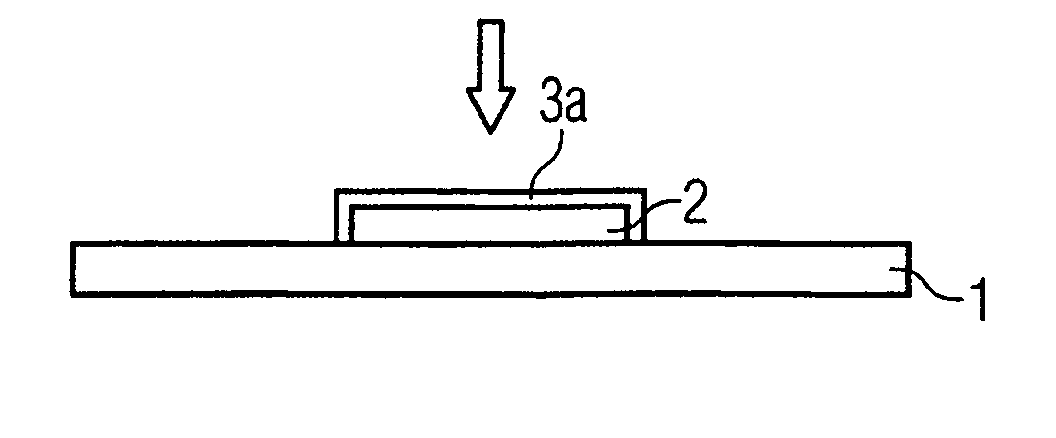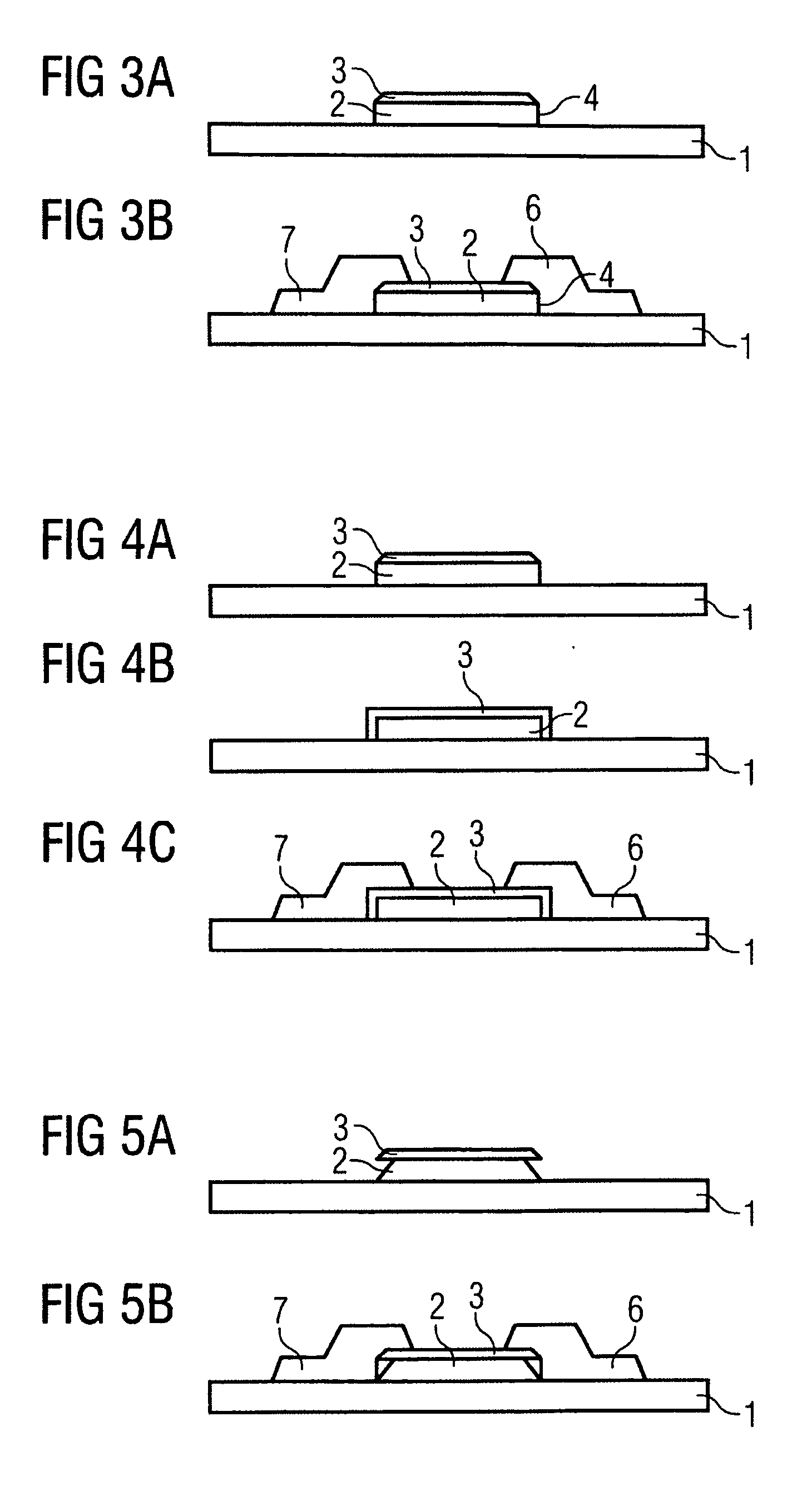Method for fabricating a field effect transistor
a field effect transistor and transistor technology, applied in the direction of electrical equipment, semiconductor devices, material nanotechnology, etc., can solve the problem of short circuits
- Summary
- Abstract
- Description
- Claims
- Application Information
AI Technical Summary
Benefits of technology
Problems solved by technology
Method used
Image
Examples
Embodiment Construction
[0036]FIG. 1 illustrates the necessary steps in the fabrication of a conventional field effect transistor. In FIG. 1a, a layer 2 of a material used for the fabrication of the gate electrode is deposited on a substrate 1. As illustrated in FIG. 1b, an etching mask 3 is thereupon deposited onto the layer of gate electrode 2, preferably by means of a printing technique. FIG. 1c illustrates the result after the etching step and the patterning of the gate electrode. It can be seen from FIG. 1c that the etching edges 4 are uncovered.
[0037] In FIG. 1d, the etching mask 3 then has to be removed before a dielectric 5 is deposited above the gate electrode.
[0038] In accordance with the method according to the invention, it can be seen that the step of removing the etching mask 3 is completely omitted since the self-assembled molecular monolayer of the organic compound 3a serves both as the etching mask 3 and as the dielectric layer 5 for the subsequent process. The process sequences, compara...
PUM
 Login to View More
Login to View More Abstract
Description
Claims
Application Information
 Login to View More
Login to View More - R&D
- Intellectual Property
- Life Sciences
- Materials
- Tech Scout
- Unparalleled Data Quality
- Higher Quality Content
- 60% Fewer Hallucinations
Browse by: Latest US Patents, China's latest patents, Technical Efficacy Thesaurus, Application Domain, Technology Topic, Popular Technical Reports.
© 2025 PatSnap. All rights reserved.Legal|Privacy policy|Modern Slavery Act Transparency Statement|Sitemap|About US| Contact US: help@patsnap.com



